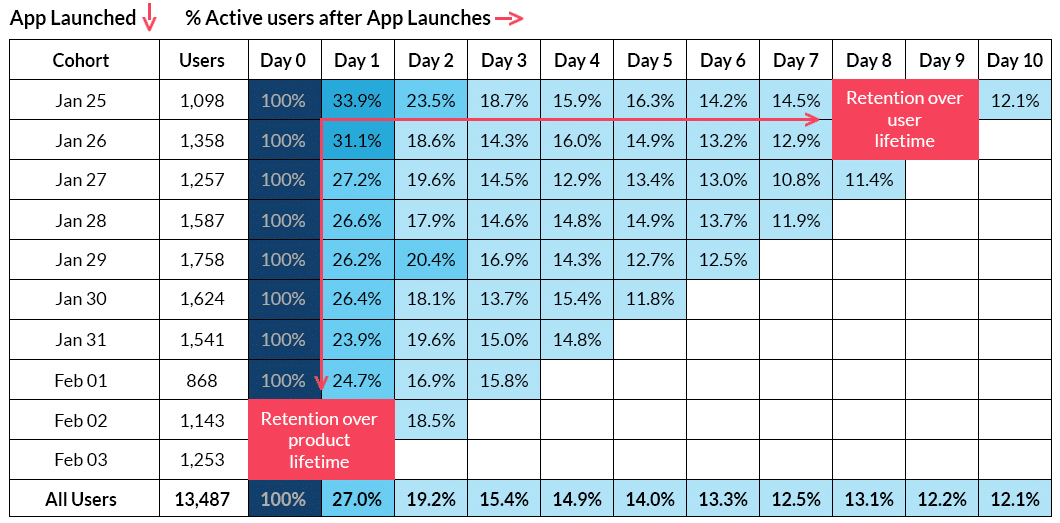How to Run a Successful Cohort Analysis to Enhance Customer Retention
Posted on
So, you’re a business owner in today’s competitive world.
You’re looking to grow your customer base, and you’re always trying to find new markets. Having a second look at current customers might be one of the most efficient ways to do that. The main aim for many companies is to acquire new customers, but we should never forget those who helped us along the way.
Retention is everything these days. According to The Hubspot, retaining customers is five times cheaper than acquiring new ones. One of the best ways to retain your customers is through a well-executed marketing strategy, including marketing automation and customer relationship management (CRM).
We’re giving you the low down on one of the most effective retention strategies out there: customer cohorts. We’ll help you make sense of these customer groups and show you how to use them in your retention strategy. So grab yourself a pen and paper and a lovely hot cuppa, too. It’s time for reading, writing, and learning. Let’s begin!
What Is Cohort Analysis?
In the marketing world, a cohort analysis is used to show how different market segments perform over a predefined period of time. In other words, it’s a way to analyze user behavior and performance as groups. By looking at two or more cohorts, you can identify many key metrics, such as activation rate and retention rate.
Let’s say you’re a software company providing tech to streamline remote call center management. At the end of a particular month, you have acquired 100 customers. You can then split these into two cohorts: 50 customers who all signed up within the first week and 50 who signed up towards the second half of the month.
By doing this, you can compare the behavior of each group and use it to understand user behavior. If your customers who signed up in the first week had a higher activation rate than the second cohort, then you know for sure that acquiring customers early in the month is more effective.
How to Run a Successful Cohort Analysis
Be Specific About Your Cohorts
You can split up all of your customers into different groups, but you should be focusing on a single metric at a time. For example, if you’re looking to improve retention rates, focus on that in one report.
If you’re a company that holds a weekly web conference to advertise your services to businesses, you could create a cohort of “weekly web conference attendees” and measure the increase in retention rates throughout the week.
Alternatively, if you wanted to measure your shopping cart abandonment rate, you could create a cohort based on “customers who added an item or items to their cart before 3 pm” and measure how shopping cart abandonment rates change over time.
Build a Strong Foundation
Diving straight into the cohort analysis without knowing what you’re looking for is unhelpful, risky even. Spending time, in the beginning, to find out where your customers are coming from and when they joined can really help when creating cohorts in later reports.
Let’s say you want to see a higher retention rate on your guided selling platform on your ecommerce store. Make a plan. You’re likely to need to know how many customers joined each site and when the first order was placed on each platform. This way, you can create a cohort based on a common point in time, such as when they all joined or the date of their first purchase.
Focus on Retention
While cohort analysis can provide valuable information, it is most useful when thinking about retention. Make sure that you not only look at the numbers but also try and understand why they occurred and how these customers compare to others.
For example, if you’re a cloud based communications company, you might find that people are more engaged on a Thursday than on a Friday. You’ll want to consider why this is. Maybe it’s because you send more promotional material on Thursdays, or perhaps it’s because your support team is more responsive on this day of the week. This will help you to better target your customers and improve retention.
How Does Cohort Analysis Improve Customer Retention?
Now you know what a cohort analysis is, it’s time to look at the results. There are two main ways that a successful cohort analysis can help improve customer retention:
Higher Churn Rate for New Customers
One of the most important metrics you should consider when doing a cohort analysis is your churn rate. Put simply, a churn rate is the percentage of customers who have left your company for a particular period.
For example, if you acquire 100 customers in a given month and then 30 left within that same period, then your churn rate is 30%. A high churn rate can be very costly to a business as you’re constantly spending money on new marketing campaigns while also losing revenue from customers who leave.
A way to keep your churn rate low is to use cohort reports. These show you the churn rate of each group of customers during a certain time period, which can be particularly helpful when looking at monthly or quarterly comparisons. You can then work on strategies to increase revenue and brand loyalty.
Customers Become Less Engaged Over Time
Another common goal for doing a cohort analysis is to improve engagement rates by looking at how they vary over time. Essentially, you want to keep customers engaged with your business as long as possible so they will be more likely to buy from you again and recommend your product/service to a friend.
To do this, you can look at how your engagement levels change over time. This could be measured in terms of subscriber activity, such as logins and posts, or it could be the number of shares and clicks for a social media campaign.
Takeaway
Successful cohort analysis can be very helpful in identifying and understanding the needs and behaviors of your customers. This makes it easier for you to create effective retention strategies that will help to reduce churn rates while also increasing engagement levels.
It’s important, however, to understand what this data is telling you and how you can use it to inform your strategy before you start making any decisions. If you do this, you’re more likely to be successful with your cohort analysis and achieve the results you want!
Good luck and happy analyzing!
 Jenna Bunnell – Senior Manager, Content Marketing, Dialpad
Jenna Bunnell – Senior Manager, Content Marketing, DialpadJenna Bunnell is the Senior Manager for Content Marketing at Dialpad, an AI-incorporated cloud-hosted unified communications system that provides valuable call details for business owners and sales representatives. She is driven and passionate about communicating a brand’s design sensibility and visualizing how content can be presented in creative and comprehensive ways. She has written for sites like CrocoBlock and LuckyOrange. Check out her LinkedIn profile




